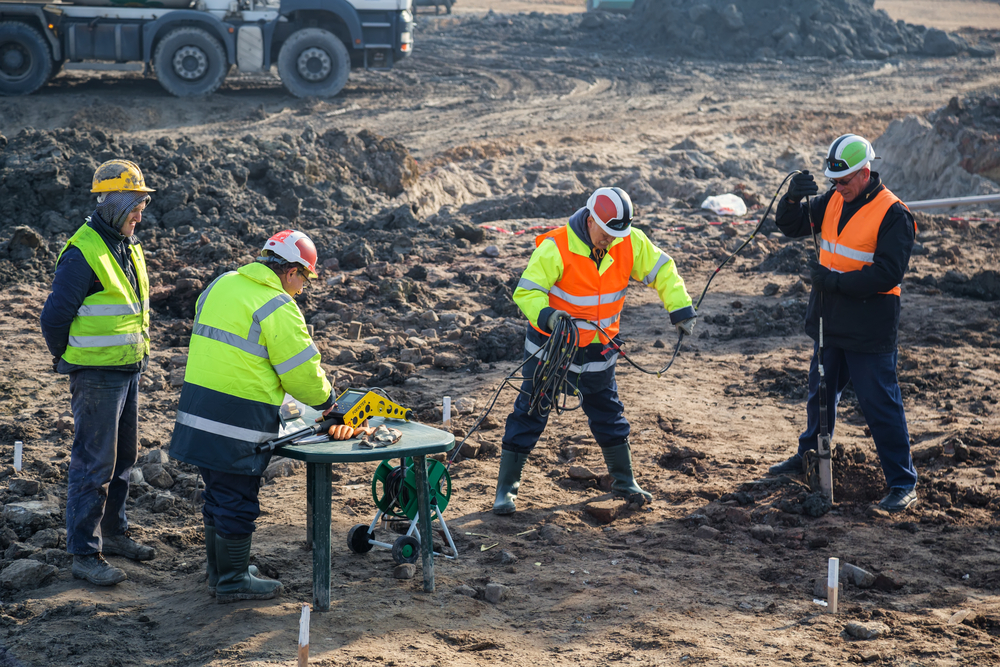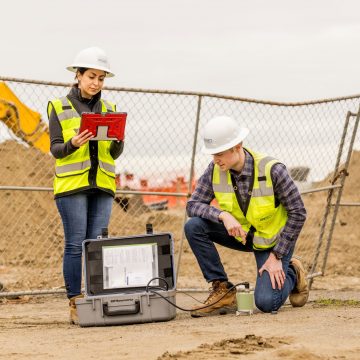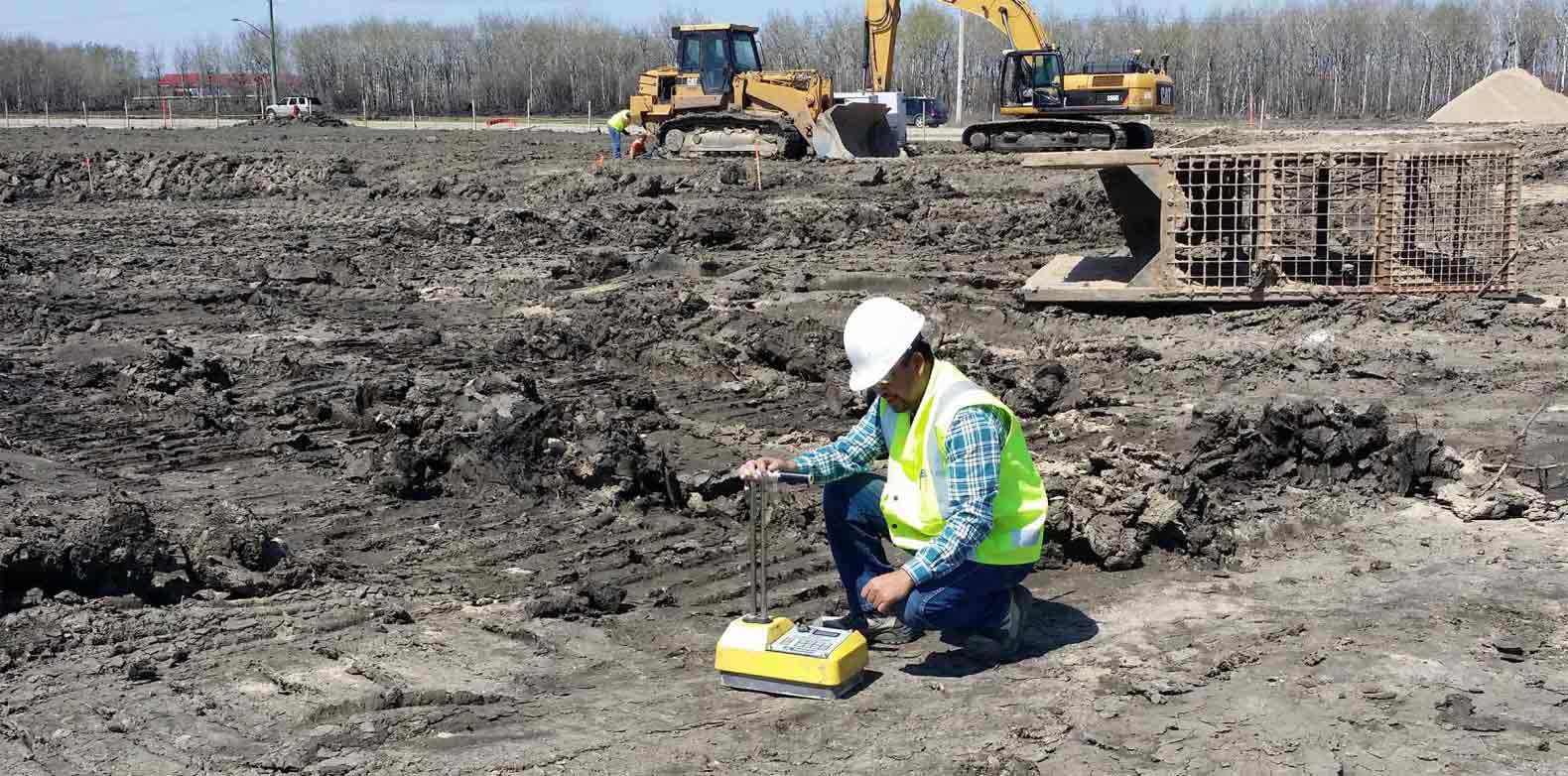Professional Consulting Engineer Solutions for Ingenious Facilities Solutions
Wiki Article
Understanding the Necessary Role of the Geotechnical Sector in Modern Construction Projects and Facilities Growth
The geotechnical sector is a foundation of contemporary building and framework advancement, providing critical understandings right into soil actions that directly influence project end results. With advanced soil evaluations and innovative design solutions, geotechnical professionals not just guarantee architectural integrity yet likewise address sustainability worries in the middle of progressing environmental requirements. As facilities needs grow and brand-new difficulties emerge, the relevance of this field comes to be significantly obvious. What effects might these advancements have for future projects and the general safety of our developed environment?Relevance of Dirt Assessment
Soil assessment plays a critical duty in the geotechnical sector, working as the structure for notified decision-making in building jobs. Precise soil examination is important for identifying the suitability of a site for various sorts of structures, including domestic homes, commercial buildings, and bridges. By examining soil structure, stamina, thickness, and moisture material, engineers can anticipate potential challenges and mitigate dangers related to ground instability, erosion, and negotiation.The evaluation procedure commonly includes a series of examinations and monitorings that supply important information concerning the subsurface conditions. This data informs the layout and building procedures, guaranteeing that frameworks are improved solid ground with ample support. Comprehending the dirt profile makes it possible for engineers to pick appropriate building and construction approaches and materials, maximizing source application and decreasing costs.
Along with making sure structural honesty, dirt assessment adds to ecological sustainability. By determining prospective contamination or adverse effects on bordering communities, engineers can apply approaches to shield these natural resources. Generally, comprehensive dirt evaluation is important in the geotechnical field, underpinning the safety and security, effectiveness, and ecological duty of building tasks.
Secret Geotechnical Strategies
A variety of key geotechnical strategies are utilized to improve the security and evaluate and performance of building and construction websites. One foundational approach is dirt sampling and testing, which allows engineers to figure out the chemical and physical buildings of the ground. This details is important for making informed choices pertaining to structure layout and construction methods.An additional important strategy is site characterization, which involves the comprehensive evaluation of dirt and rock problems via approaches such as borehole drilling and in-situ testing. Strategies like Requirement Penetration Examinations (SPT) and Cone Penetration Tests (CPT) supply useful information on soil toughness and stratigraphy.
Ground improvement strategies, such as soil stabilization and grouting, are additionally vital in boosting the load-bearing capacity of weak soils. These approaches can mitigate negotiation and improve general website problems.
In addition, slope security evaluation is important for determining prospective landslide risks and making certain the safety of excavations. This analysis often uses mathematical modeling and limit stability approaches to anticipate soil behavior under numerous problems.
Integrating these geotechnical strategies right into building and construction planning not just enhances job outcomes yet also ensures the long-lasting sustainability of framework development.
Influence On Building Security

In addition, efficient geotechnical design includes implementing mitigation approaches for determined threats. This may consist of soil stablizing methods, retaining frameworks, or drainage systems to ease hydrostatic pressure. By dealing with these variables, construction groups can lower the probability of mishaps and boost worker security.
In addition, continual monitoring of website conditions is critical throughout construction. Geotechnical tools can supply real-time data concerning ground activity and security, allowing for timely interventions when necessary.
In essence, the geotechnical industry plays an essential function in securing construction tasks. By prioritizing ground integrity and employing strenuous analysis methods, the geotechnical industry not only secures the workforce however likewise adds to the long life and dependability of constructed infrastructure.
Sustainability in Geotechnical Practices

In addition, geotechnical designers are currently employing advanced technologies, such as geosynthetics, which enhance dirt security while reducing the volume of material called for. This not only conserves resources but also results in much less waste generation (geotechnical engineers). The integration of sustainable design principles right into geotechnical design urges the use of renewable resource sources in building procedures, better reducing carbon discharges
Furthermore, thorough website analyses are important for determining prospective environmental effects before building begins. By carrying out these assessments, geotechnical professionals can develop methods that minimize damaging results, guaranteeing compliance with environmental policies. On the whole, the focus on sustainability within geotechnical practices not only contributes to the longevity and resilience of facilities yet also promotes a responsible method to land and source monitoring. This dedication is vital for promoting lasting development in the contemporary building and construction landscape.
Future Trends in Geotechnical Engineering
Technology is driving the future of geotechnical engineering, as emerging modern technologies and approaches improve the industry. The combination of innovative information analytics and expert system is established to change site investigation and threat analysis, enabling designers to make more educated decisions based upon real-time information. Additionally, making use of geosynthetic materials is getting grip, providing lasting remedies that improve dirt security click to read and reduce environmental impact.Another significant pattern is the adoption of automated and robotic systems for tracking and building processes. These innovations not just enhance precision but also enhance safety by minimizing human involvement in hazardous environments. Furthermore, the execution of Structure Information Modeling (BIM) in geotechnical style promotes enhanced partnership among stakeholders, optimizing task delivery and reducing prices.
As environment change poses brand-new obstacles, the industry is increasingly concentrating on durability and versatility in layout practices, ensuring framework can hold up against severe weather occasions. The ongoing fad toward sustainability will certainly drive advancement in environmentally friendly materials and approaches, aligning geotechnical engineering with more comprehensive ecological objectives. Collectively, these fads will shape an extra effective, lasting, and resilient geotechnical landscape for future jobs.
Verdict

The geotechnical market is a cornerstone of modern-day building and infrastructure growth, offering vital understandings right into soil habits that straight affect project end results. tailings engineer.Dirt evaluation plays a crucial role in the geotechnical sector, serving as the structure for notified decision-making in construction tasks. In general, thorough dirt assessment is indispensable in the geotechnical area, underpinning the safety, performance, and environmental obligation of building projects
Building and construction security is dramatically affected by geotechnical practices, as the security and integrity of the ground straight impact the overall security of a construction website.In final thought, the geotechnical sector is essential in contemporary building and construction and facilities growth, supplying vital assessments that ensure architectural stability and safety and security.
Report this wiki page